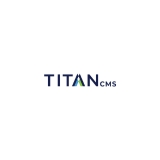What Marketers Need to Know About CMS Architecture
Today, organizations have vastly different needs for creating, managing, and delivering content than ever before, and the CMS market has adapted accordingly. An array of CMS architectures meets a variety of different business goals, including multichannel content delivery, user skillsets, hosting requirements, speed to market, and scalability.
It's important for marketers to understand the various types of CMS architectures available in order to identify the best option. Let's take a look at the most common ones.
Common CMS Architectures
Traditional (Headed) CMS
Definition: A traditional CMS combines the content repository (backend) and the presentation layer (frontend) in one platform.
Examples: WordPress, Joomla, Drupal, Squarespace
Pros
- Easy for marketers and non-technical users
- WYSIWYG editing and live previews
- Built-in templates and themes
Cons
- Less flexible for multi-channel delivery (e.g., apps, IoT)
- Can be harder to scale or customize for complex needs
Headless CMS
Definition: A headless CMS decouples the backend (content storage) from the frontend, delivering content via APIs to any channel or device, including your website.
Examples: Kentico, Umbraco, Contentful, Agility CMS
Pros
- Maximum flexibility for developers
- Omnichannel delivery (web, mobile, apps, smart devices)
- Future-proof for new technologies
Cons
- No built-in frontend or visual editing
- Marketers may lose some autonomy as developer support is usually needed
- Requires more technical resources to implement and maintain
Hybrid CMS
Definition: A hybrid CMS blends the best of both worlds, offering traditional authoring tools and templates with headless API delivery.
Examples: Sitecore, Kontent by Kentico, Zesty.io, Titan CMS
Pros
- Marketers get WYSIWYG editing and content preview
- Developers get API-first flexibility
- Supports both website and omnichannel strategies
Cons
- Can be more complex to set up
- May require careful planning to avoid feature overlap
Composable CMS
Definition: A composable CMS is built on a modular, API-first architecture that lets organizations assemble their digital experience stack from independent, interchangeable components, such as content modules, microservices, and third-party integrations. While all composable CMSs are headless, not all headless CMSs are composable.
Examples: Contentstack, Contentful, CrafterCMS, Strapi
Pros
- Add, swap, or remove components.
- Select and integrate the best tools from multiple vendors.
- Scale individual services or modules independently.
- Quickly experiment with new features or channels
Cons
- Initial set up and integration is often more complex than other CMS types.
- Can be more costly than other options due to additional planning, integration, and custom development needs.
- Multiple options make it easy to over-engineer.
- May not be ideal for organizations with simple needs or small teams.
Other CMS Types
Decoupled CMS: Similar to headless but often includes some presentation capabilities.
Cloud CMS: Hosted in the cloud, offering scalability and reduced IT overhead. These are referred to as SaaS (or Software as a Service) platforms.
Open Source vs. Proprietary: Open source (e.g., WordPress, Drupal) offers flexibility; proprietary solutions (e.g., Sitecore, Kentico, Titan CMS) offer greater customization and enterprise support and features.
How to Determine the Best CMS Architecture for Your Organization
To help determine the best architecture for your organization, answer the following questions:
- Assess your digital strategy: Do you need to publish to multiple channels (web, mobile, apps)?
- Evaluate team skills: Is your team mostly marketers, developers, or a mix?
- Consider future needs: Will you need to scale, localize, or personalize content?
- Balance autonomy and flexibility: Marketers often prefer traditional or hybrid; developers may push for headless. Can you agree on a direction?
Once you have the answers to these questions, review the definitions and pros and cons of each CMS type to determine the best option, and take our handy online CMS Architecture Quiz to point you in the right direction.
If you need help determining the best architecture or guidance with your overall CMS selection process, reach out. Our team has been helping organizations choose the right CMS for their unique needs for more than 20 years and can help you do the same!

